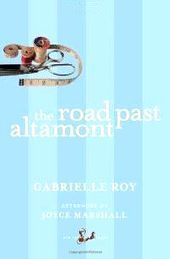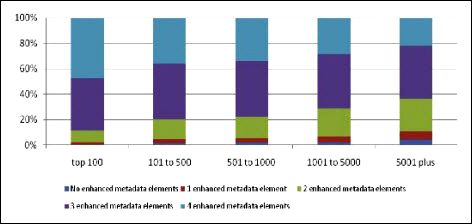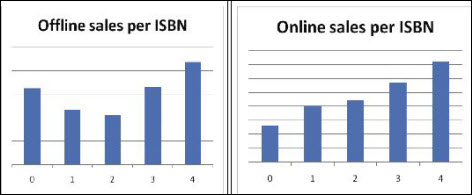June 24th, 2012
NOTE: The white paper mentioned here was updated in 2016. Download the new version here (PDF). The thrust of the report is the same, with updated data and analysis.
In my last post I introduced the recent (January 2012) book industry white paper called The Link Between Metadata and Sales (first version no longer available). It was researched and written by staff at Nielsen Book based on 2011 sales data from over 70 countries, notably the UK (and Europe), Australia and South Africa. The paper is essential reading for everyone interested in the future of book publishing.
 Metadata mavens make a distinction between basic or “core” metadata and more information-rich “enhanced metadata”. In my last post I focused on the most important element of basic metadata: a picture of the book cover. Even at the postage stamp size common to ecommerce sites, a picture is worth a thousand words…and, on average, five times the sales volume.
Metadata mavens make a distinction between basic or “core” metadata and more information-rich “enhanced metadata”. In my last post I focused on the most important element of basic metadata: a picture of the book cover. Even at the postage stamp size common to ecommerce sites, a picture is worth a thousand words…and, on average, five times the sales volume.
The image to the left is from the paperback edition of Gabrielle Roy’s The Road Past Altamont. It doesn’t succeed online but then it wasn’t designed for that purpose. Most books available online were designed before ecommerce took the lead in book reselling. But most book covers work well at small sizes. At the same time designers are learning how to optimize cover design for the reduced real estate of ecommerce sites.
Beyond Basic Data: Enhanced Metadata
Definitions for enhanced metadata vary and no one has declared a standard for the term. Presenting at Digital Book World in 2011, BookNet’s Noah Genner recommended that publishers include country of author, regional code, links to external sites, table of contents, jacket copy and/or blurbs, excerpts, reviews, prizes and both national and local media mentions.
Bowker aggregates three types of title data: core, descriptive and enriched. Descriptive data includes language of publication and page count. Enriched metadata is well-described as “the marketing information that allows your users to decide if they want to read or purchase it. Think of it as providing an in-store browsing experience to a reader. In that environment, they are able to flip through the pages of your book, read the back cover, or scan the first chapter. Browsers become potential buyers as they have the opportunity to discover if your book is right for them.”
For the purposes of its white paper, Nielsen considered four categories of enhanced metadata: the short description (350 characters), long description, review, and author biography, and then quickly proclaimed victory for enhancement.
The graph above is intended to demonstrate that the more the enhancement the higher the sales. Except it doesn’t. In this illustration you see that adding just one of four fields decreases sales, and that two fields makes things still worse. Only the third and fourth enhanced fields produce results (apparently without distinguishing which of the four are most potent).
As the authors acknowledge, “it is difficult to separate cause and effect.” Assigning cause and effect is a big challenge when interpreting the results of this study. Do books sell because they have rich metadata? Or are the most promising titles rewarded with great metadata as part of the extra attention that publishers customarily provide their most promising contenders?
The chart above, Figure 2.3 in the white paper, is the only attempt to look at the most successful sellers and how they differ from the average. Apparently none of the top 100 bestsellers lacked all four enhanced elements and 48/100 had all four elements. The “all four” percentage drops to just over 20% for the 5001+ sellers. Surprisingly less than 5% of that group lacked for any of the enhanced fields.
What struck me as most damming to the arguments in the report is the comparison above to the “offline” (i.e. in a bookstore or other brick and mortar retailer) versus online sales. The authors take a stab at explaining away the aberration of the negative offline impact of adding just one or two of the four possible enhanced fields, explaining that “the highest selling titles within this group are mostly children’s activity books, annuals and well established brands.” Perhaps so. But the chart also seems to show that these titles were top sellers anyway, so the appearance of enhanced metadata might be more effect than cause.
There’s so much more to the white paper — lots of food for thought, and some for disagreement. Nielsen has offered publishers important insights on the value of title metadata.
We still need to ascertain exactly which types of metadata are most powerful for authors and publishers. As Amazon.com and other online booksellers continue to enhance the features and the space they devote to enhanced metadata the opportunity increases for publishers to focus their online sales.


